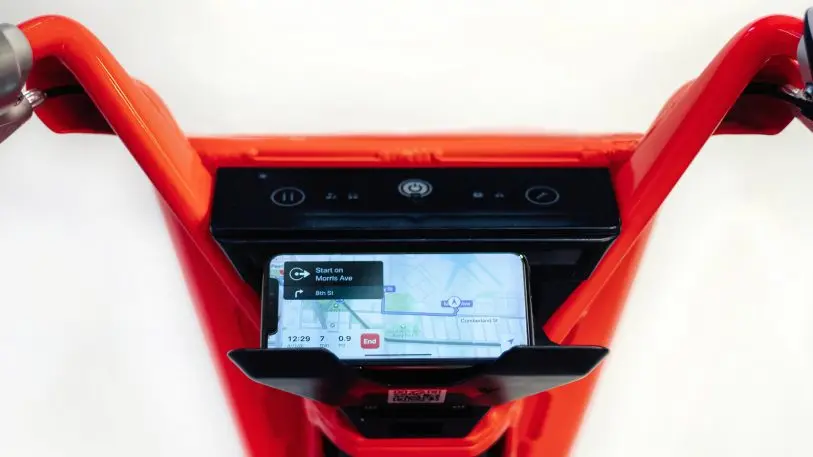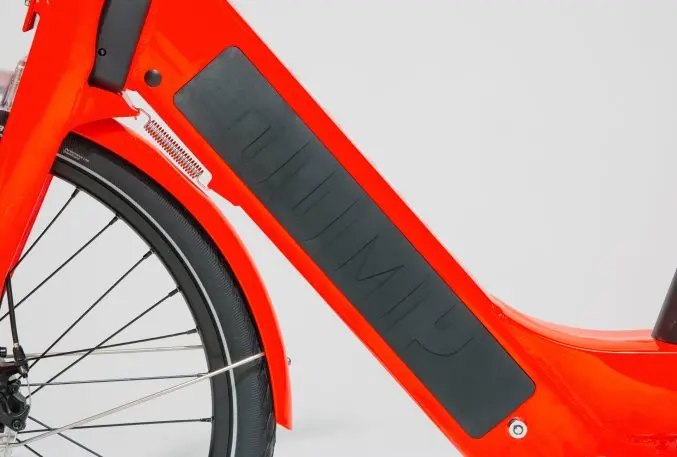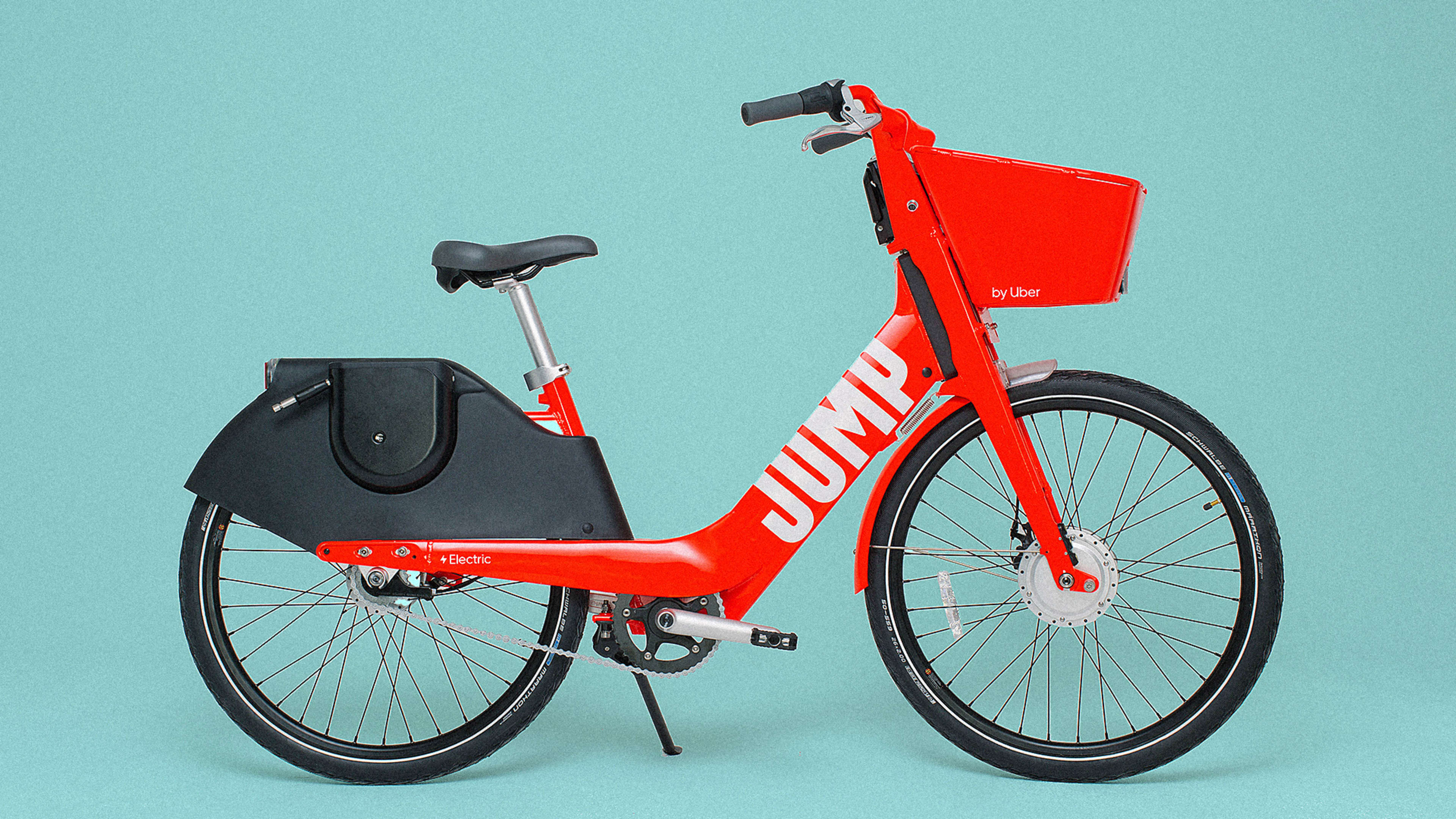Uber may want to win the self-driving car wars, but first it faces a battle over electric bikes and scooters. Earlier this year, it acquired the electric bike-sharing service Jump for $200 million. Today, leveraging an engineering staff that’s grown by four times since the purchase, Jump is launching a completely redesigned electric bike, aiming to make scaling its business more feasible–and riding more pleasant for users.
But Jump’s goal is much bigger than just a new bike. The eight-year-old company wants to use the same engineering to revolutionize the market for any electrical vehicle on two wheels–including ubiquitous electric scooters, which it also provides in some markets. “Whether that’s in a bike, scooter, or other form factor, we feel we have a lot of contribute to the state of the art,” says Nick Foley, head of product at Jump.

The bike project began years ago, informed by what Jump saw going wrong with its bikes in the 12 cities where it operates. The early generation of Jump bikes were built upon existing frames and components. Standard electric bikes were retrofitted with extra gear to make them shareable, like 4G and GPS chips. That meant they were glossy Frankensteined machines, with points of failure that your average bike manufacturer couldn’t predict. Frames break. Screws pop out. Cables get exposed and fray. Unpredictable, or what Jump calls “non-routine” failures add up.
Even if bike-share companies manage to pack all the technology needed to track and power a bike into an off-the-shelf model, it still isn’t designed for mass public consumption. “The usage a shared vehicle gets is a completely different world than what a consumer vehicle gets. It’s literally 10x as many miles, and those are harder miles. You’re not babying it as you would your own vehicle.”

In response, Jump began developing its own bike alongside what it describes as “the largest bike manufacturer in the world” (the identity of which Jump would not confirm). Together with this unnamed partner, they redesigned the bike from the ground up to be more durable, easier to use, and functionally scalable in terms of necessary maintenance.

At first glance, the fiery red bike doesn’t appear to be so different than its predecessor. Users will appreciate that it has a dock for your smartphone in the handlebars, so they can follow turn by turn directions while they ride, and a bike lock integrated with the rear fender. With a light pull of their wrist, a rider can secure the metal cord around anything available. In the previous generation of its bike, Jump provided a 3.5-pound steel U-lock that was cumbersome. New users often just forgot to bring it with them before riding off.
“We wanted people to be able to understand the product much more quickly,” says Foley, “to get first-time users engaged.”
Other changes run deeper. Every single major component, whether it’s the motor, brakes, or pedals, is now connected to sensors. Jump can monitor the performance of these components in real time, in the cloud, where Foley says that algorithms can spot problems as, or even before, they happen.
Additionally, the bike’s battery can now pop in and out of the frame, meaning that to recharge the bikes, Jump’s staff no longer needs to collect them in a truck. Instead, an employee can just come by the bike and swap in a fresh battery. Watching as Foley demos this feature–which takes all of a second, and looks a lot like swapping the battery in a laptop–it’s hard to imagine the bikes were ever built another way.

“Whether it’s bikes or scooters, a big part of the service is recharging vehicles,” confirms Foley. “And having a [removable] battery offers lots of operational efficiency.”
With all of these updates, Foley believes that Jump has created a shared electric bike that can spread worldwide. The new bikes are projected to last 3 to 5 years before wearing out, with maintenance happening once a quarter or so. (Jump would not share its current bike maintenance schedule, but implied it’s vastly improved.) “By scale, I mean deploy thousands and maintain them for years in a city, while knowing they’re still high-quality, reliable vehicles,” says Foley. “These are the smartest light electric vehicles that have ever been built.”
Next up, Jump wants to engineer a bike that can go a full year without maintenance. But in the meantime, Foley’s team is also thinking beyond the bike. Every bit of connected technology in the new Jump bike could be scaled to any other two-wheeled vehicle, like its scooters, that Jump wants to launch.
“One of the things we see as an advantage we have is, a lot of these pieces of technology we described are valid across multiple types of vehicle,”says Foley. “You can easily imagine how all of these same pieces of tracking and locking and battery tech are things we’d be leveraging as we build out an entire ecosystem of shared electric vehicles.”
Recognize your brand’s excellence by applying to this year’s Brands That Matter Awards before the early-rate deadline, May 3.
